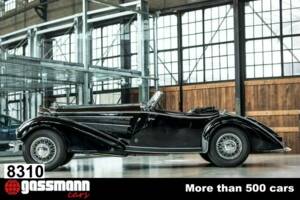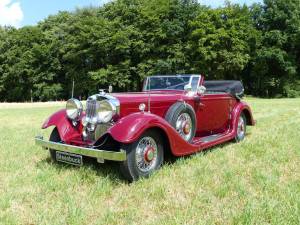- Car
- Horch (8 offers)
Horch Classic Cars for Sale
Horch represents the pinnacle of German pre-war automotive engineering, with a focus on large-displacement eight- and twelve-cylinder luxury cars, constructed with uncompromising workmanship and innovative technology. Famous for their rare and meticulously designed models, Horch classics are synonymous with mechanical artistry, hand-built exclusivity, and enduring prestige.
Search results
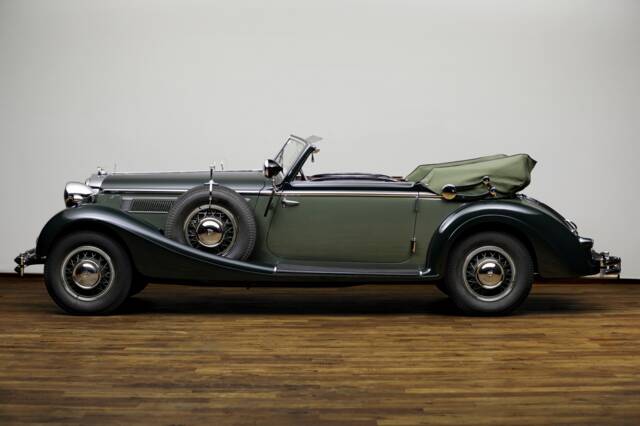
1938 | Horch 853 A Sport
In excellent condition and with only one owner since 1997

1935 | Horch 855
HORCH 855 Gläser Spezial Roadster
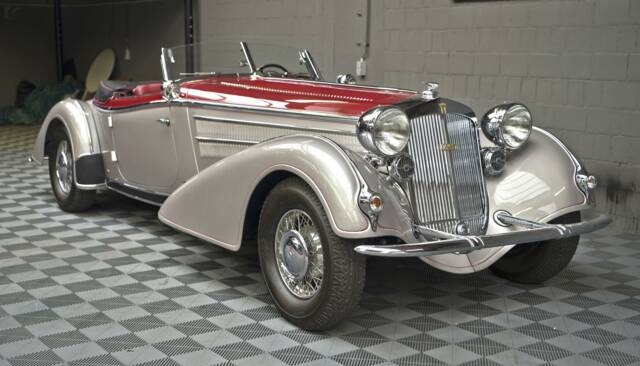
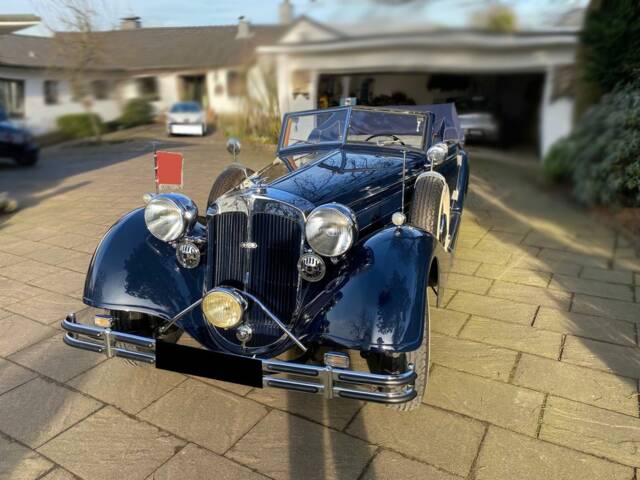
1937 | Horch 853 Sport
Sports convertible with factory bodywork
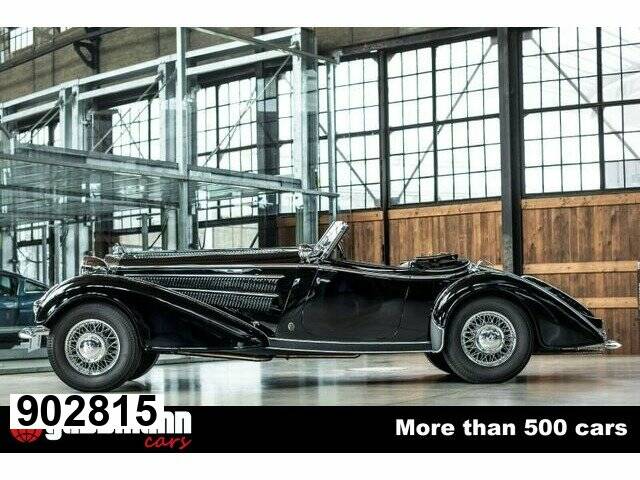
1935 | Horch 855
HORCH 855 Gläser Spezial Roadster
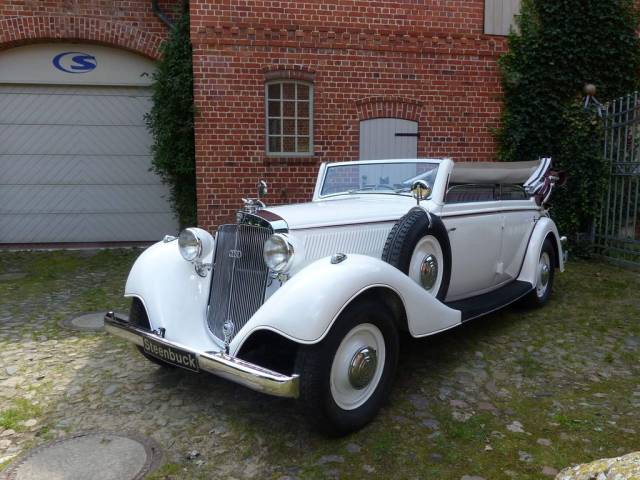
1936 | Horch 830 BL
Beautiful Horch Convertible

1932 | Horch 780 Sport-Cabriolet
A rare luxury classic
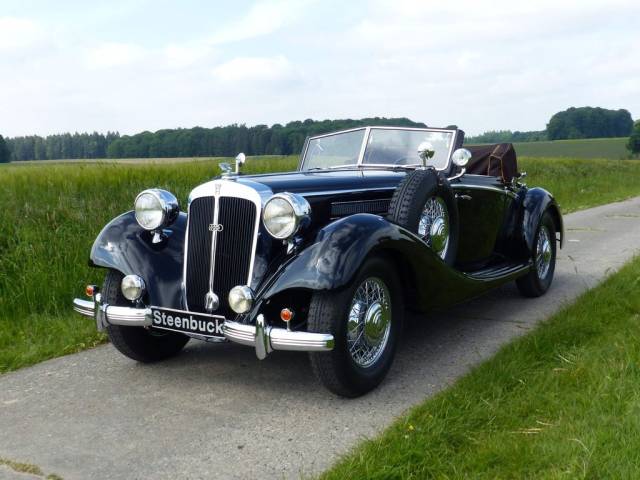
1939 | Horch 930 V
Special Convertible (Hornig), only made once!
Horch listing references from Classic Trader
Below you will find listings related to your search that are no longer available on Classic Trader. Use this information to gain insight into availability, value trends, and current pricing for a "Horch" to make a more informed purchasing decision.

1935 | Horch 830 BL
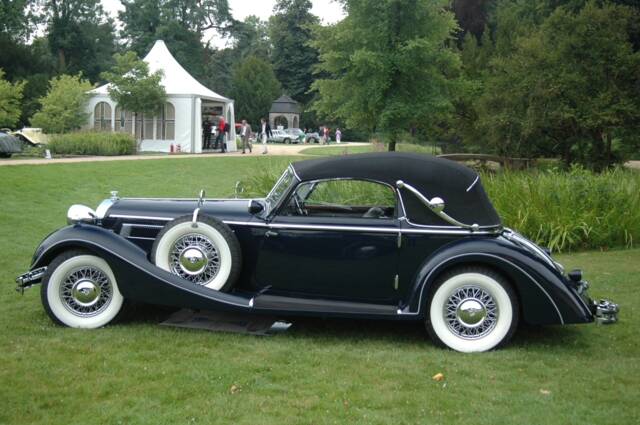
1938 | Horch 853 A Sport
Restauriertes Sport Cabriolet, ein Wagen der Luxusklasse

1931 | Horch 12 670

1956 | Horch P 240 Sachsenring
Oldtimer Horch Sachsenring P 240 Rahmen

1930 | Horch 8 470 - 4.5 Litre

1936 | Horch 853 Sport
HORCH 853 Sport Cabriolet
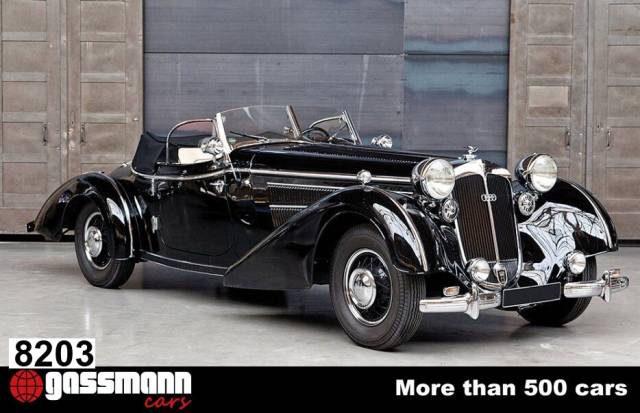
1940 | Horch 853 A Sport
HORCH 853 a Spezial Roadster
History of Horch
Founded in 1899 by August Horch, a pioneer previously at Benz, Horch quickly developed into a leader in German luxury car manufacture. After relocating his company first to Reichenbach and finally to Zwickau by 1903, August Horch left due to disagreements in 1909, later founding Audi. Horch’s reputation continued to thrive, thanks to high-quality craftsmanship and engineering innovation. In the 1930s, Horch produced its most celebrated straight-eight and V12 engined models, competing head-to-head with Mercedes-Benz and Maybach. In 1932, Horch joined with Audi, DKW, and Wanderer to create Auto Union—the source of Audi’s four-ring logo. After the Second World War, only the Sachsenring P 240 briefly bore the Horch name before its discontinuation in 1956.
Model Ranges: The Development of Horch
Horch focused on luxury touring cars, with its early years marked by technically advanced 4-cylinder and later 6-cylinder engines. The Horch 8, featuring an innovative inline-eight developed by Paul Daimler in 1926, set new standards for refinement. The 1930s brought the 780, 850, and especially the 853 series—luxurious grand tourers with powerful straight-eight engines and bespoke coachwork. The 830/830 BL series, with V8 engines, offered slightly less exclusivity but broader accessibility. Post-merger within Auto Union, Horch continued developing advanced chassis and engines until the war. The last true Horch was the V8-powered 930 V, before the Sachsenring P 240 closed the chapter on the marque.
Highlights and Unique Features of Horch Models
Horch models distinguished themselves with technical sophistication—most notably their inline-eight and V8 engines, advanced chassis, and supreme build quality. Custom coachwork by famous builders like Erdmann & Rossi, Voll & Ruhrbeck, and Hornig enhanced their visual impact and exclusivity. Interiors featured rare woods, hand-stitched leather, and Art Deco details. The Horch crest, often gilded, adorned many vehicles.
Technical Data
Special Editions and Collectible Models
Among the rarest is the Horch 855 Roadster—only eight were built, each with striking lines and bespoke details. The Horch 853 Spezialroadster by Erdmann & Rossi is another highlight: a limited-production, hand-crafted grand tourer, notable for its dramatic, low-profile design and unique interior details. The Horch 780 Sport Cabriolet, with coachwork by Hermann Ahrens, is highly significant both for its rarity (c. 16 known survivors) and design pedigree.
Weak Spots and Common Issues
Due to their complexity and the requirement for originality in restoration, Horch cars demand extensive technical knowledge and patience. Correct mechanical and aesthetic restoration is challenging, with the originality of engine and chassis numbers being crucial for value. High-quality documentation, period photographs, and provenance reports are vital for collectors. Chrome work and interior trim restoration are particularly demanding due to the use of rare materials and custom pieces.
Engine, Performance, Transmission, and Handling
Horch models from the 1930s delivered powerful performance for their era—straight-eight engines up to 5.0 litres, V8s, and even V12s, geared towards effortless high-speed touring. Examples include the Horch 853, with a 120 hp eight-cylinder, capable of up to 135 km/h, and the V8-powered 830 BL, combining 3.8 litres and 92 hp. Steering and braking were advanced for their time; the chassis balance aimed to combine comfort and stability on long journeys. Popularity metrics indicate the 850 and 8 series are the most recognised, each offering distinctive engineering and driving characteristics. - Horch 850: Flagship status, most listed and most in demand.
- Horch 8: Technical milestone with Zoller and Daimler-designed engine.
- Horch 830/830 BL: More numerous, practical, and still highly equipped.
- Horch 855 Roadster, 853 Spezialroadster: Extremely rare and technically advanced; recognised for elite coachwork and mechanical developments.
Interior, Comfort, Exterior and Design
Horch’s design ethos fused flowing, elongated bodywork with low stance and bold fender lines. Bespoke work by Erdmann & Rossi and Voll & Ruhrbeck resulted in highly individualized vehicles, often unique. Interiors showcased Art Deco influences: burled wood, rich leathers, chrome trim. Exteriors could feature gold-plated badges and elaborate chrome work. Accessories included period spotlights, fitted luggage, special wheel designs, heated gloveboxes, and even electric power steering on some later models. Coachbuilders offered extensive colour and material choices, tailoring each car to its buyer’s wishes.
Other Relevant Features
Horch vehicles were a statement of technological progress and luxury. Participation in prestigious concours events remains a hallmark of the marque, with provenance and condition keenly documented. Concours awards and expert appraisals are common among surviving vehicles, which benefit from extensive historical records and restoration documentation. Literature, period photos, and maintenance archives contribute to their historical significance.
Summary
Horch cars, from their origins in August Horch’s innovation to their role as luxury standards of pre-war Germany, stand as unique vehicles—rare, mechanically advanced, and individually crafted. Dominating the upper echelon of the era’s automotive hierarchy, they are today not only sought after for their mechanical and design credentials but also as tangible artefacts of a lost age of motoring craftsmanship.

